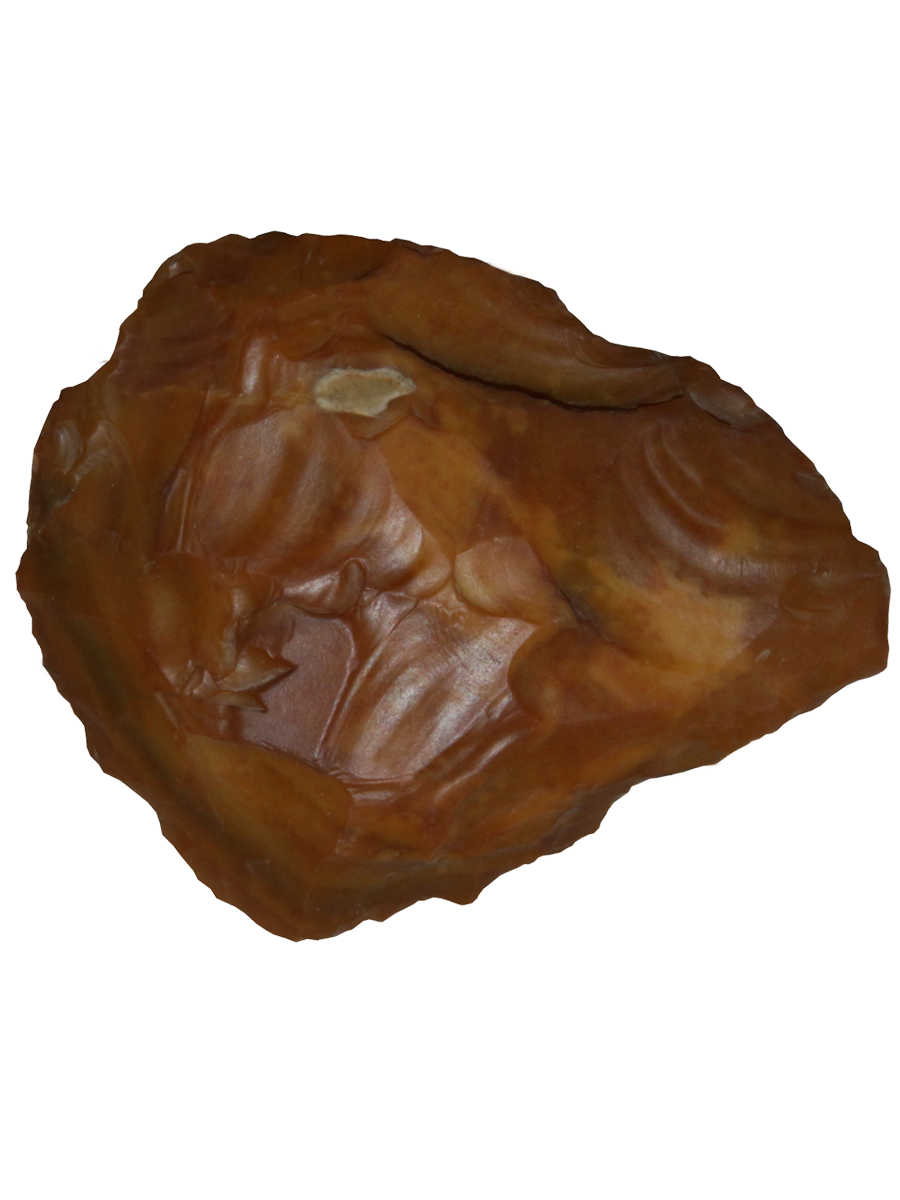Chopper (Hand Axe), Abadzekh camp site

Chopper (Hand axe) is a tool of a primitive man, widely distributed in the Lower Paleolithic (1.8 million – 300 thousand years ago). It was a large stone of almond shape, rounded and slightly thickened at one end and pointed at the other. The edges were also sharpened with retouching (chippings). Early forms of hand axes were made rough, later ones had much better processing. This tool was multifunctional and could have been used for various labor operations. Such tools could cut, break, make holes in both soft and hard materials. For example, they could kill animal, butcher a carcass and process bone or wood. The hand axe found at the camp site of the village of Abadzekh (Krasnodar territory) is quite small in comparison to others and is made of flint. The edges are not very smooth, the end is blunted. It could probably have been inserted into some sort of a shaft and secured with resin and/or a leather belt, although it is believed that most of the hand axes were used by holding them directly in the hand.
Functional purpose: it is a multifunctional tool (piercing, cutting, scraping).
Notice of uniqueness: it is a typical tool of a primitive man, widely distributed during the Lower and Middle Paleolithic.
